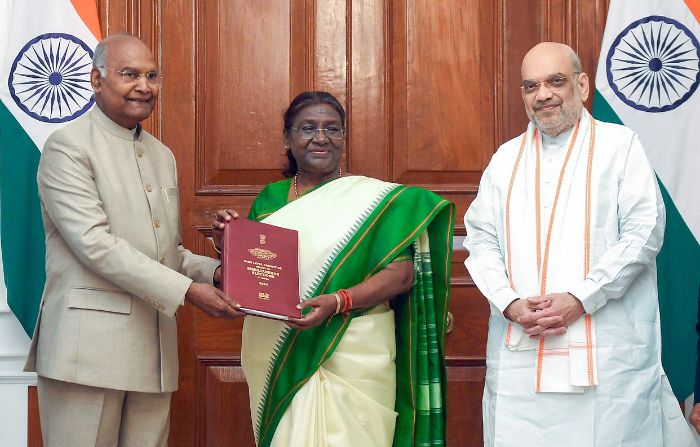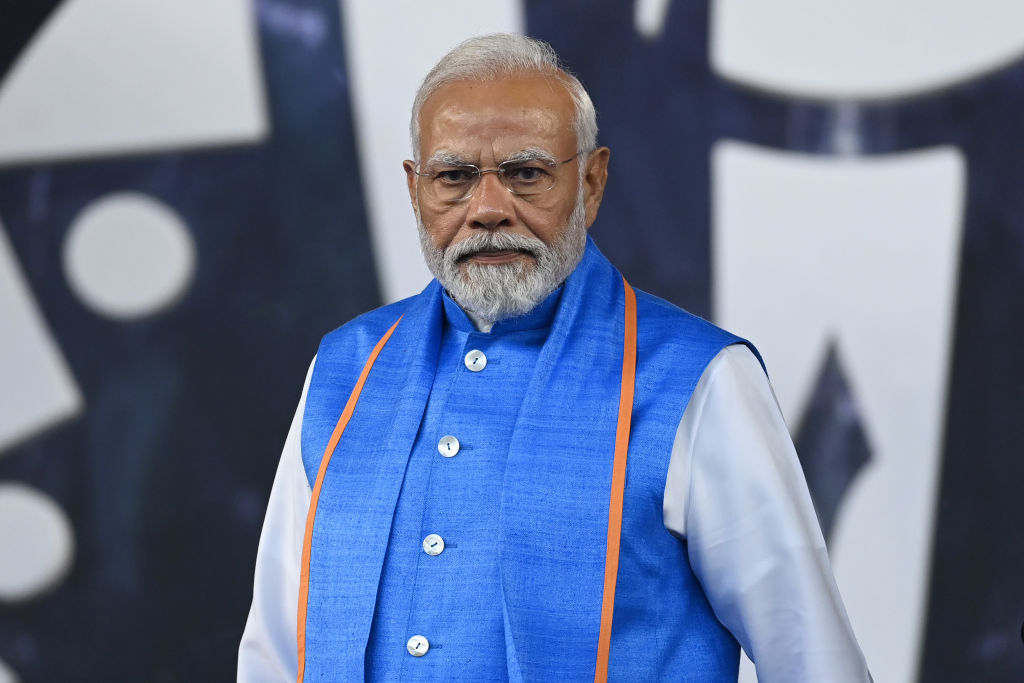- Friday, April 18, 2025
India used to have simultaneous national and state elections between 1952 and 1967 but former prime minister Indira Gandhi broke the pattern in 1971 when she called early general elections.

By: Shubham Ghosh
IN a significant development on Thursday (14), a committee led by former Indian president Ram Nath Kovind submitted a report on the Narendra Modi government’s push for ‘One Nation, One Election’ which seeks simultaneous elections at the federal and state levels. The report was submitted to president Droupadi Murmu.
The panel, which was formed last September, has gone through “best practices from other countries”, and spoke to representatives from nearly 40 parties, economists and officials of the Election Commission of India. During the submission of the report, the panel said it backed the idea but called for a mechanism which is legally sustainable and can re-align existing electoral cycles.
“The committee is of unanimous opinion that simultaneous polls should be held,” the 18,000-page report said, noting that elections at the federal and state level could be held together with local body elections 100 days later. Elections at India’s federal level and states are held after every five years unless the ruling party calls for early elections or there is a disruption that leads to imposition of presidential rule there.
Read: Modi government forms ‘one nation, one election’ panel to explore idea of holding all polls together

The ‘One Nation, One Election’ proposal was part of the governing Bharatiya Janata Party’s (BJP) manifesto during the 2019 general elections but the opposition criticised the move, citing constitutional issues. They also accused the Modi government of setting up autocracy in the country and going for an eventual ‘One Nation, No Election’ system.
Read: Why Google is cautious about nations going to elections in 2024
It is not that India never held simultaneous polls. Four the first two decades after independence, the country saw elections at the federal level and the states being held together. But the pattern was broken when former Indian prime minister Indira Gandhi brought the general elections of 1972 ahead by a year in order to make them a referendum on her populist measures. She won the election overwhelmingly, trouncing the opposition alliance.
Now, only a few states vote at the same time when the entire country goes to the poll to elect a new national government. This year, states such as Andhra Pradesh, Sikkim and Odisha will hold elections simultaneously with the general polls due in a few months. Some other states will also go to elections this year, such as Maharashtra, Haryana and Jharkhand. The Union Territory of Jammu and Kashmir will also have to hold its first election in six years within September 30, in sync with a recent order of India’s apex court on restoring its statehood.
Election cycles in states across the country have also been disrupted at various points of time, thanks to their own political twists and turns. For example, India’s youngest state Telangana had its first election the same year the 2014 general election was held. But its former ruling party decided to bring the election of 2019 ahead by a year and it now has a separate five-year cycle.
Holding elections at different points of time also face challenges, such as logistical and financial, constitutional and legal. While the BJP has backed the idea of holding simultaneous elections saying that it would not hamper development work since elections every year compel the parties to always remain in a poll mode, hurting their focus on governance.
Critics, however, say that it is a strategic thinking by the BJP to connect states with the ‘Modi factor’, something that works more effectively during national elections and the party fails to replicate the same success in many state elections with local leadership.
Last year, Indian law minister Arjun Ram Meghwal explained to the parliament the government’s rationale behind holding simultaneous elections and listed some possible hurdles. He said simultaneous elections will slash expenses to give relief to the public exchequer and reduce deployment of officials and security forces several times a year to serve electoral duties in different parts of the country.
He also said that holding polls meant implementation of the Model Code of Conduct more often, affecting roll-out of welfare schemes — be it at the federal level or at the state(s). The government also feels that holding elections together will see a rise in voters’ turnout which now varies from state to state and during the general polls.
However, there are also legal challenges. Amendment to the Constitution and it being ratified by states and UTs and possibly by major political parties is key for the process going smoothly. Legal experts also caution that a failure to address the legal requirement could see the opposition accusing the government for tampering with India’s federal structure.
Some of the articles that would be under focus are Article 83 (term of Parliament), Article 85 (dissolution of Lok Sabha by the President), Article 172 (duration of state legislatures), Article 174 (dissolution of state legislatures), and Article 356 (imposition of president’s rule in states).
What if a constitutional crisis in a state reduces the life of its government and it loses confidence of the majority? It is not clear.
Another concern is the recurring cost of procuring electronic voting machines that India uses for its polls — both national and state. This will lead to a massive cost every 15 years, India’s poll panel has said in the past .
In 2015, the election commission submitted a feasibility report on the ‘One Nation, One Election’ proposal, in which it suggested that no-confidence motions include nomination of a new chief minister or prime minister to take over should the incumbent lose the trust and majority. The new leader must immediately face a test. In case of an early dissolution, only a short term election can be held to elect a government for the remainder of the term.
The ‘One Nation, One Election’ panel has received nearly 21,000 suggestions from the public, of which more than 81 per cent were in favour, news agency Press Trust of India said in January. But given India’s deeply polarised political milieu, it is to be seen whether the idea can be implemented at all.